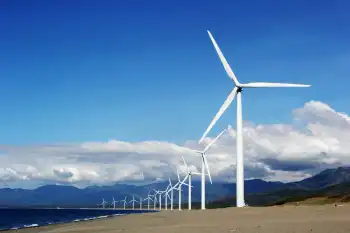Area electricity called sufficient
The electrical grid operator for 15 Midwest states, Midwest ISO, said it hit a record 131,434 megawatts demand the afternoon of July 17 as the temperature in Toledo again hovered in the mid-90s. But major utilities in northwest Ohio and southeast Michigan said demand was strong but may not have been a record.
One megawatt is enough to power about 1,000 households, or an area such as suburban Whitehouse.
The higher demand did result in high prices for power on the spot market. An average megawatt-hour the week before July 17 in Ohio cost a power supplier $40 to $50 on the spot market, but that price at one point soared to more than $300, said Mike Wilczek, editor of Megawatt Daily.
None of the local utilities called for customers to conserve energy, which fits with an earlier energy assessment indicating there is more than enough power this summer to supply a nine-state region extending from Indiana east to Delaware.
According to ReliabilityFirst, a new organization that now monitors the nine states, including Ohio, to insure the area's power needs are met, customers in that territory will need about 187,500 megawatts this month. The region is farther east and has more population than the Midwest ISO territory.
The region has power plants to generate 222,395 megawatts, or about 15 percent more than expected demand. That provides a good safety margin, said Jeff Mitchell, an engineering director for ReliabilityFirst.
In 1998, for example, the margin was about 10 percent. When storms shut down power plants and a searing heat wave ate up that margin, it forced rolling blackouts and loss of power by some industrial customers.
"A few years ago we were predicting a pretty tight margin, but that's changed," Mr. Mitchell said.
Mark Durbin, a spokesman for FirstEnergy Corp., a major supplier to northwest Ohio, said none of the utility's plants was out of service.
Related News

Europeans push back from Russian oil and gas
BERLIN - Europe is producing all-time highs of wind and solar energy as the 27-country group works to reduce its reliance on fossil fuels from Russia.
Four months after Vladimir Putin’s full-scale invasion of Ukraine in February 2022, the European Commission launched REPowerEU. This campaign aims to:
- Boost the use of renewable energy.
- Reduce overall energy consumption.
- Diversify energy sources.
EU countries were already moving toward renewable energy, but Russia’s war against Ukraine accelerated that trend. In 2022, for the first time, wind and solar power surpassed gas as a source of electricity. Wind and solar provided a record-breaking 22% of EU countries’ electrical supply,…





